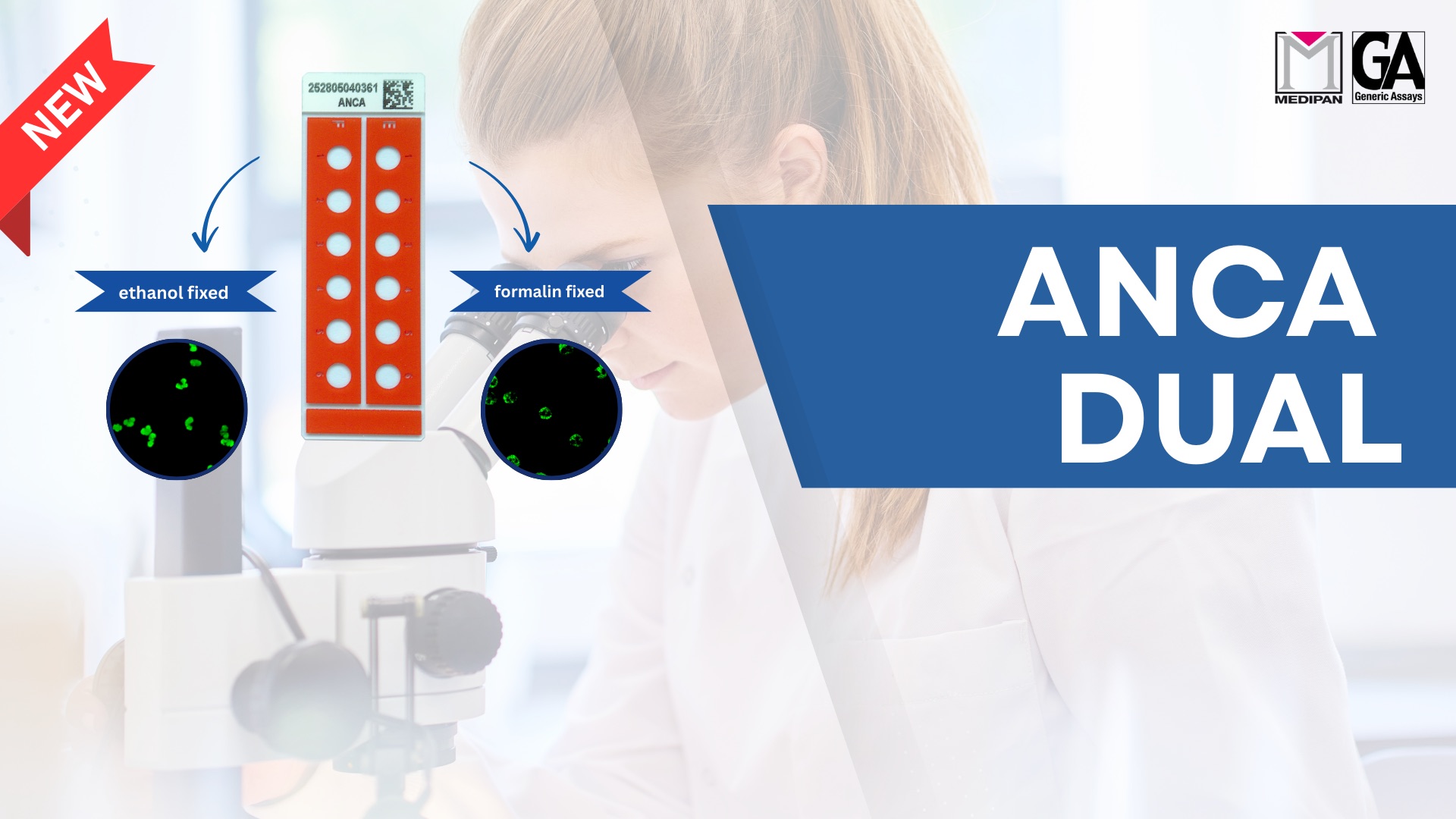
ICAP Update: Expansion of ANA Pattern Classification with AC-30 and AC-31
The International Consensus on ANA Patterns (ICAP) has taken another significant step in the continuous advancement to promote harmonization and understanding in antinuclear antibodies (ANA) of the HEp-2 IFA. As previously anticipated, in the ongoing update of the ANA pattern classification, two newly identified patterns, AC-30 and AC-31, have been incorporated into the ICAP nomenclature and classification tree. A special code has also been assigned to unclassified patterns (AC-XX). This update, dated February 27, 2025, reflects the latest scientific evidence and improves the accuracy of ANA pattern interpretation in clinical and research laboratories worldwide.

Adapted from www.anapattern.org and from reference [1].
Advancing ANA Pattern Classification
Since its establishment, ICAP has consistently provided a standardized framework for interpreting and classifying ANA patterns. It guides clinical laboratories, researchers, and physicians in their work. The HEp-2 IFA test remains a key tool for detecting autoantibodies. Refining its classification system ensures accurate diagnostics. The addition of AC-30 and AC-31 follows extensive research and expert consensus discussions at the 7th ICAP Workshop in 2023, which recognized the need for further differentiation within the nuclear fine-speckled pattern category. These new patterns contribute to a more nuanced understanding of ANA reactivity and its clinical implications.
Key Characteristics of AC-30 and AC-31
- AC-30: A newly identified nuclear fine-speckled pattern with stained metaphase plate that differs from the established AC-2 (Dense Fine Speckled) pattern. It presents distinct morphologic and immunologic characteristics necessitating its classification as a separate entity. AC-30 showed minimal association with anti-DFS-70 antibodies, in contrast to the strong presence of such antibodies in AC-2 samples [2].

(A) Dense fine speckled (AC-2) pattern and (B) dense fine speckled pattern with mitotic plate (AC-30). Adapted from reference [1].
- AC-31: A refined subcategory of the nuclear AC-4 (Smooth Fine Speckled) pattern, characterized by a myriad of discrete tiny dots. Research shows a strong association between AC-31 and anti-SS-A/Ro60 antibodies [3], This reinforces its diagnostic significance in autoimmune diseases like systemic lupus erythematosus (SLE) and Sjögren’s syndrome.

(A) Smooth fine speckled (AC-4) and (B) myriad discrete speckled (AC-31). Adapted from reference [1].
Implications for Clinical Practice and Laboratory Diagnostics
The integration of AC-30 and AC-31 into the ICAP classification tree provides several benefits for laboratory professionals and clinicians:
- Improved Diagnostic Accuracy: Identifying fine-speckled nuclear patterns enhances ANA test precision and lowers the chance of misclassification.
- Enhanced Standardization: By refining pattern definitions, ICAP improves global consistency in ANA reporting and autoimmune diagnostics.
- Guidance for Further Testing: AC-31’s link with anti-SS-A/Ro60 antibodies helps guide targeted follow-up testing
Next Steps and Ongoing Developments
While ICAP now includes AC-30 and AC-31 in its classification system, the team is developing additional resources for gradual website updates.
- Example Images: High-quality HEp-2 IFA images will be added to the ICAP website to aid in pattern recognition and differentiation.
- Updated Descriptions: Comprehensive documentation with immunological and clinical correlations will guide laboratories in result interpretation.
- Educational Initiatives: ICAP will engage globally through workshops and online resources to promote the new classifications.
The updated ANA pattern classification tree is available, also in different languages, on the ICAP website (www.anapatterns.org).
ICAP advances ANA pattern standardization to ensure autoantibody diagnostics keep pace with scientific progress and clinical needs.
References
[1] Andrade et al., (2024) Reflecting on a decade of the international consensus on ANA patterns (ICAP): Accomplishments and challenges from the perspective of the 7th ICAP workshop
[2] Landoni et al., (2023) How consistent are the association of HEp-2 patterns and autoantibody specificities
[3] Röber et al., (2021) Strong Association of the Myriad Discrete Speckled Nuclear Pattern With Anti-SS-A/Ro60 Antibodies: Consensus Experience of Four International Expert Centers





